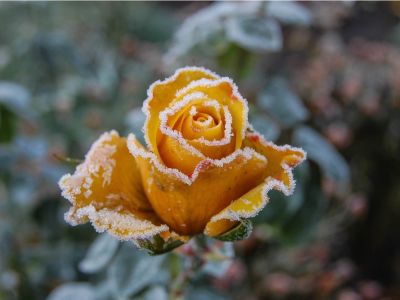What is a Frost Versus Freeze Warning?
Various factors affect the severity of cold weather. The dew point, wind chill, and other variations can send temperatures plummeting more than indicated. Many of our garden denizens are sensitive, and special steps need to be taken to protect plants from freeze. Frost protection for plants may also be necessary if the plant is not hardy to expected temperatures. Often our first cold spurt is in the form of a freeze. The difference between frost and freeze is not necessarily temperature, but where the cold attacks. Frosting is when a plant is exposed to temperatures of 32 degrees Fahrenheit (0.00 Centigrade). It is usually observed on the exterior of the plant. The plant radiates heat at night which releases water vapor. That freezes on the surface of the plant. The early autumn frosts often cause the vegetable garden and other tender plants to die. A freeze is generally a longer event and occurs when the interior temperature of the plant gets to 32 Fahrenheit (0.00 Centigrade). The frozen interior tissue warms during the day and the cells release water and break down. The result is dark brown to black spots and water soaked areas that become mushy, resulting in death of annual and sensitive plants.
Frost Protection for Plants
Frost vs. freeze damage is slightly different, and protecting plants from each condition is also different. Since frost occurs on the outside of the plants, the simplest way to protect them is by covering them. This can be done with an old sheet or other light covering, or by purchasing frost barrier fabric. When you get a frost warning, it may be radiative or advective. Radiative frost comes when there is a clear night, and the temperature may or may not be freezing. The surface temperatures of the plant become freezing and there is enough moisture in the air to turn into ice crystals. Advective frost happens where strong, cold wind occurs at night.
How to Protect Plants from Freeze
Another difference between a frost versus freeze warning is duration. A frost may last minutes or hours, but a freeze is usually all night. It is important to move sensitive plants indoors and water other plants prior to freezing conditions. Mulching around the plant can protect root zones. Lift tender bulbs and store them well before freezing weather. In orchards, sprinklers can be used to create a glaze of ice over plants which keeps interior temperatures warmer because it prevents radiation. Plants in unheated greenhouses or in row covers can be kept warm with a string of lights or a utility light. Just make sure the bulbs aren’t touching fabric or plant material directly.
